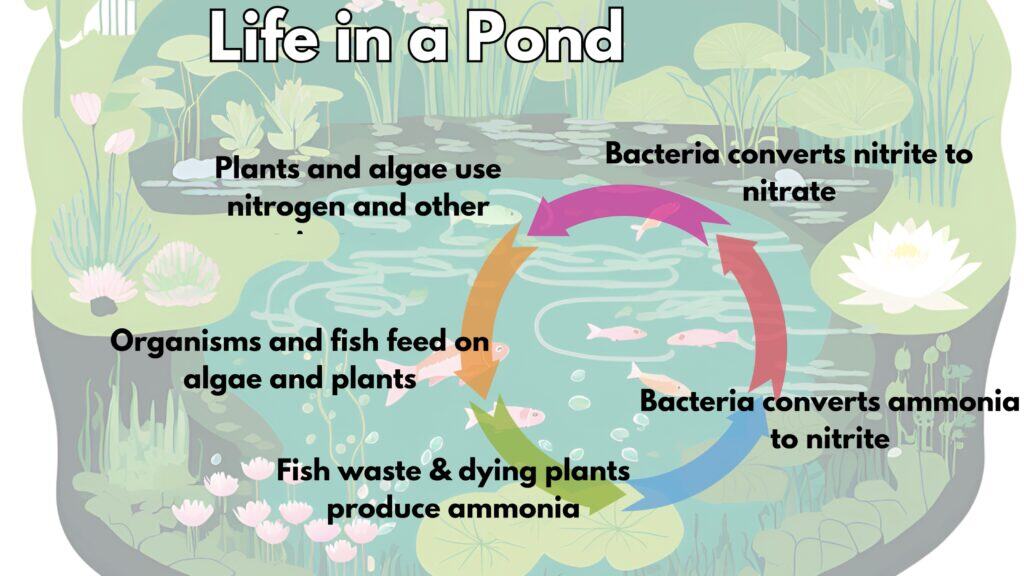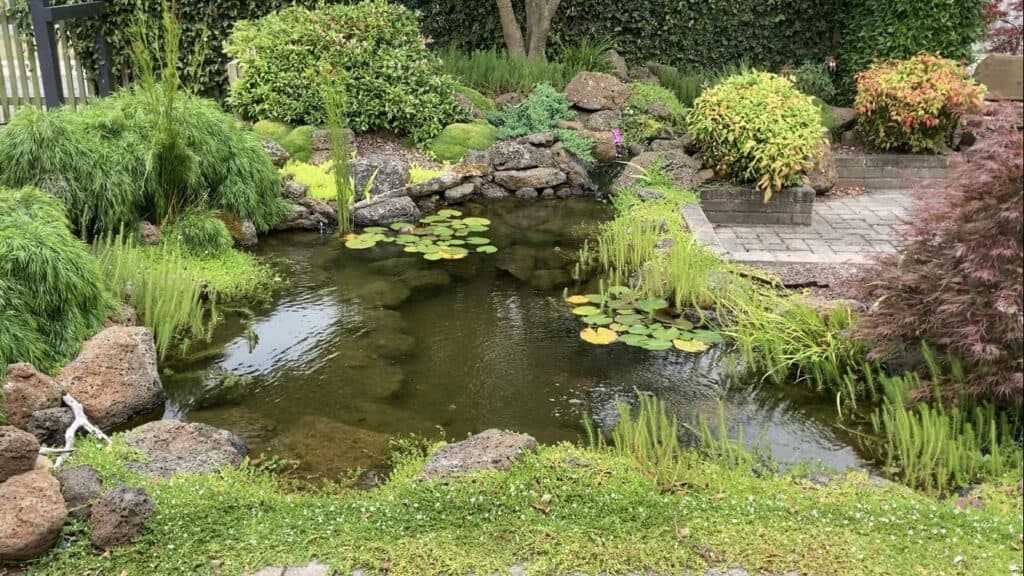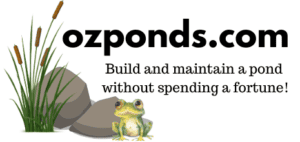If you’ve ever dreamed of having a peaceful, crystal-clear pond in your backyard—one that attracts wildlife, adds beauty to your space, and doesn’t turn into a smelly, algae-filled mess—you’re in the right place.
G’day! I’m Kev. I help people build and maintain backyard ponds without spending a fortune. This quick guide walks you through the five core things you need to understand to build a pond that works: filtration, water movement, plants, fish, and maintenance.
And if you’re just starting out? Don’t stress. I’ve put together free tools to help you plan your pond, size your filter, and choose the right pump.
You’ll find them here, along with my email list where I share exclusive pond-building tips.
1. Biological Filtration: Your Pond’s Engine Room
If there’s one thing that will make or break your pond, it’s biological filtration. Forget expensive gadgets and harsh chemicals. Nature already has the best system in place.
Beneficial bacteria break down fish waste and decaying plant material. They live on surfaces like rocks, gravel, and plant roots, and they thrive in oxygen-rich environments.
Here’s the cycle:
- Fish waste and dead plant bits release ammonia
- Bacteria convert ammonia to nitrite, then to nitrate
- Plants soak up the nitrate as food

If there aren’t enough bacteria, or not enough surface area or oxygen, algae jumps in and throws a party. That’s when things go green and gross.
That’s why I love bog filters. They’re basically mini wetlands packed with gravel, plants, and bacteria. They’re:
- Easy to DIY
- Low maintenance
- Super effective
And because they’re big, they provide loads more surface area for bacteria than most off-the-shelf filters.
Don’t have room for a bog? No worries—I’ve covered other filtration options in separate videos and blog posts.
But if you take one thing away from this section, it’s this: grow beneficial bacteria, give them space to live, and keep the water oxygenated.
2. Water Movement: Yes, You Need a Pump
Technically, you can build a pond without a pump. But it’s going to be easier (and work a lot better) if you have one.
Worried about power bills? There are some very efficient options these days. I run 13 pumps full-time—probably more, I lose count—and I’ve made videos and blog posts breaking down exactly what they cost to run.
Running a pump 24/7 keeps oxygen flowing and delivers water to your filter. This is what allows the bacteria to do their job.
Plus, moving water picks up oxygen from the air, which helps your whole ecosystem thrive.
Looking for a energy efficient pump? Click here!
Pump size depends on your pond setup: total volume, bog size, waterfall, stream, etc. That’s why I created a full Pond Formulas Blueprint with all the calculations I use. In it you get my KevBot AI assistant to do the math for you and access to a private community (share photos, videos, ask questions).
Where you put your pump matters, too. Ideally, it should help remove solids and avoid clogs. I often build skimmers, intake bays, or negative edges to help with this.
You can retrofit these even if your pond is already built—and yes, I’ve got drawings and guides inside the blueprint.
3. Plants: Your Natural Algae Defense
Fish waste creates nutrients like nitrate. Algae loves nitrate. So… the trick is to let plants eat those nutrients first.
Aquatic plants:
- Soak up nutrients
- Shade the pond (slowing algae growth)
- Add oxygen and habitat
- Make your pond look amazing
One issue? Some fish love to munch on plants. That’s another win for bog filters—they’re often separated from the main pond, so your plants and bacteria get a break from overenthusiastic grazers.
Your ideal plant mix will depend on your local climate, but in general:
- Floating plants for surface shade
- Marginal plants for the edges
- Submerged plants for oxygenation
In a bog filter, don’t bother with pots. Just rinse off the soil and plant them directly into the gravel.
4. Fish & Other Animals: Less Is More
Fish bring life to your pond, but it’s easy to go overboard.
More fish = more waste = more nutrients = more algae = more headaches.
That’s why I recommend understocking, especially when you’re starting out. It gives you breathing room and helps your system stay balanced.
And feeding? Be careful. Most beginners feed too much. A little goes a long way, and your pond has natural food sources already. Too much feed = cloudy water and sick fish.
Rule of thumb: the more fish and the more feeding, the more filtration and maintenance you’ll need.
5. Maintenance: What Actually Needs Doing
If you set things up right, pond maintenance is surprisingly chill. Often less work than the rest of your garden.
Some basics:
- Don’t overclean your filter
- Rinse filter media using pond water, not tap water (chlorine kills good bacteria)
- Top up with rainwater if possible
- Thin out plant roots now and then
- Check your pump once a year
Occasionally, you might need to remove built-up sediment with a net or pond vacuum (amazon link). And if you use a bog filter, give it a flush once a year (or every two if it’s running well).
As for testing water? You can test for everything, but you don’t need to obsess. Watch your pond, not your test kit. If your water is clear, plants are thriving, and fish are happy, you’re on the right track.
Ready to Build Your Pond?
I know this is a lot to take in. That’s why I’ve made it easier:
🎁 Grab my free pond planning bundle: includes checklists, calculators, and a simple roadmap
And if you’re ready to go deeper, check out my Pond Formulas Blueprint:
- Proven step-by-step system
- Diagrams, formulas, and walkthroughs
- Access to KevBot, my virtual pond assistant
- Private Facebook community for support
You really can build a backyard pond that stays clean, clear, and low-maintenance.
Thanks for reading! Want more?

Join my free email list
If you would like to join my free email list click the button below.
I promise I won’t spam you, I’ll only send information I think can help you save money building and maintaining a pond.

